Imagine your storefront. A wave of customers floods in each morning, eager to explore your wares. But what secures your shop at night, keeping your inventory safe and your mind at ease? Enter the rolling shutter – a reliable and versatile security solution. And the unsung hero behind these shutters? The Rolling Shutter Slat Roll Forming Machines.
This industrial marvel takes sheets of metal and transforms them into the interlocking slats that create the rolling shutter curtain. But there’s more to this machine than meets the eye. Delve deeper and discover the world of roll forming, where precision engineering meets efficient production.
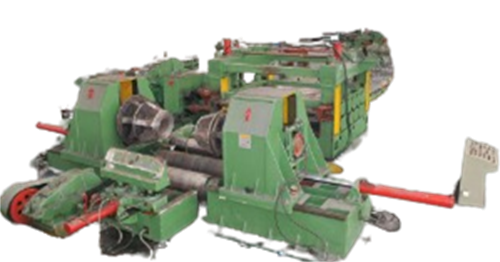
Function of Rolling Shutter Slat Roll Forming Machine
Think of a Rolling Shutter Slat Roll Forming Machine as an origami master for metal. It starts with a coil of steel or aluminum, a flat sheet with immense potential. The machine then guides the metal strip through a series of rollers, each strategically shaped to bend and fold the material into the desired profile. Imagine a long, intricate mold continuously shaping the metal as it progresses.
These rollers can create a variety of slat shapes, from simple flat profiles to those with reinforcing ribs or even ventilation holes. The possibilities are vast, allowing for customization to suit specific security and aesthetic needs.
Here’s a breakdown of the roll forming process:
- Feeding: The metal coil is unwound and fed into the machine.
- Straightening: Any initial bends or imperfections in the sheet are ironed out.
- Roll Forming: The metal is progressively shaped by a series of precisely designed rollers.
- Cutting: The formed slat is cut to the desired length.
- Stacking or Coiling: The finished slats are either stacked or coiled depending on the application.
The entire process is automated, ensuring consistent quality and high production rates.
Types of Rolling Shutter Slat Roll Forming Machines
Just like there’s a variety of rolling shutter designs, there are different types of roll forming machines to match. Here’s a closer look at the two main categories:
- Single Head Roll Forming Machines: These workhorses focus on forming a single slat profile. They’re ideal for low-volume production or for businesses that require a specific, non-standard slat design.
- Multi-Head Roll Forming Machines: Imagine having multiple origami masters working in tandem. These machines boast multiple forming stations, allowing for the creation of complex profiles with multiple bends in a single pass. This translates to faster production speeds and increased efficiency, perfect for high-volume operations.
Here’s a table summarizing the key differences between these types:
| Feature | Single Head Roll Forming Machine | Multi-Head Roll Forming Machine |
|---|---|---|
| Slat Profile Options | Limited | More versatile, can create complex profiles |
| Production Speed | Slower | Faster |
| Cost | Generally less expensive | More expensive |
| Suitability | Low-volume production, specific slat needs | High-volume production, diverse slat requirements |
Additional factors to consider when choosing a machine include:
- Material Thickness: The machine should be capable of handling the desired thickness of steel or aluminum for your shutters.
- Slat Width: Machines come in various widths to accommodate different shutter sizes.
- Control System: Modern machines offer computerized controls for precise profile creation and user-friendly operation.
-
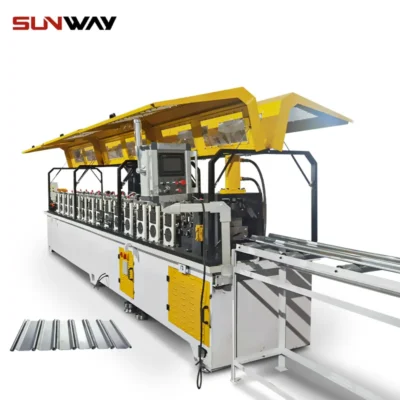 Rolling Shutter Slat Roll Forming Machine
Rolling Shutter Slat Roll Forming Machine -
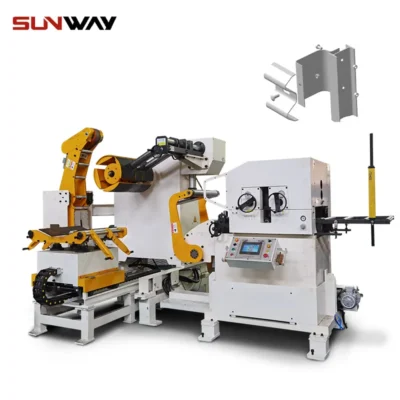 Highway Guardrail End Terminal Forming Machine
Highway Guardrail End Terminal Forming Machine -
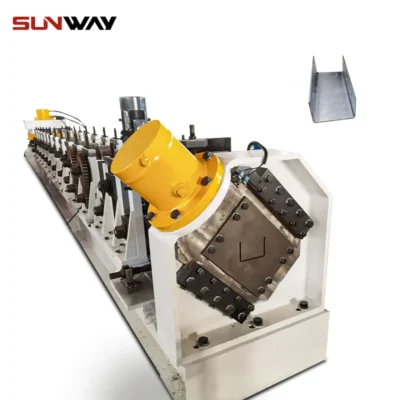 Highway U/C Post Roll Forming Machine
Highway U/C Post Roll Forming Machine -
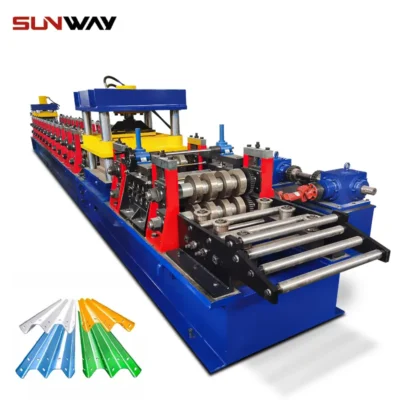 2 Waves Highway Guardrail Roll Forming Machine
2 Waves Highway Guardrail Roll Forming Machine -
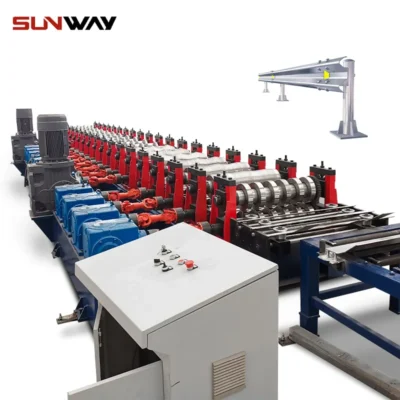 3 Waves Highway Guardrail Roll Forming Machine
3 Waves Highway Guardrail Roll Forming Machine -
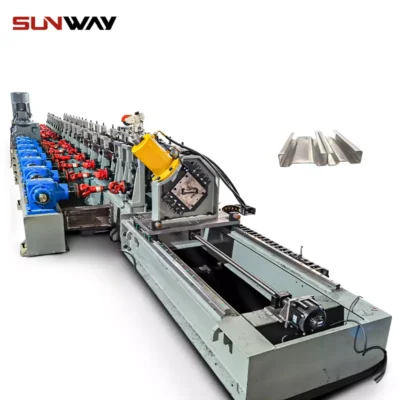 Auto Size Changeable Sigma Purlin Roll Forming Machine
Auto Size Changeable Sigma Purlin Roll Forming Machine -
 Auto Size Changeable C Z Purlin Roll Forming Machine
Auto Size Changeable C Z Purlin Roll Forming Machine -
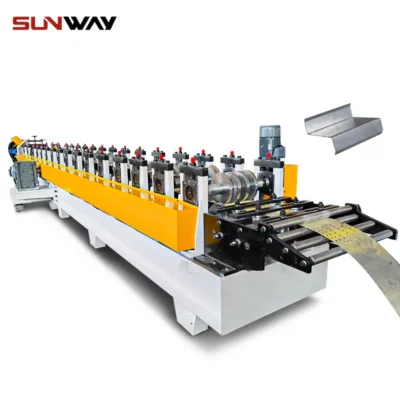 Auto Size Changeable Z Purlin Roll Forming Machine
Auto Size Changeable Z Purlin Roll Forming Machine -
 Auto Size Changeable C U Purlin Roll Forming Machine
Auto Size Changeable C U Purlin Roll Forming Machine
Advantages of Rolling Shutter Slat Roll Forming Machines
Rolling shutter slat roll forming machines offer a multitude of benefits for shutter manufacturers and end-users alike. Here are some key advantages to consider:
- Efficiency and Speed: Compared to manual forming methods, these machines significantly boost production rates, allowing for quicker fulfillment of shutter orders.
- Consistent Quality: The precise control offered by the machines ensures consistent slat profiles, leading to well-fitting, reliable shutters.
- Reduced Labor Costs: Automation minimizes the need for manual labor, leading to cost savings in the manufacturing process.
- Material Versatility: Many machines can handle both steel and aluminum, allowing for flexibility in shutter material selection.
- Customization Potential: With a variety of roll forming options, manufacturers can create unique slat profiles to cater to specific needs and aesthetics.
Applications of Rolling Shutter Slat Roll Forming Machines
Rolling shutter slat roll forming machines play a vital role in various industries. Here are some prominent applications:
- Security Shutters: These are the most common application, providing security for storefronts, warehouses, and other commercial buildings.
- Fire Shutters: Specifically designed slats with fire-resistant properties can be formed for added protection.
- Hurricane Shutters: Reinforced slats can be created to withstand the powerful winds and debris associated with hurricanes.
Types and Material Options
Not all slats are created equal. The profile and material of the slat significantly impact the functionality and aesthetics of the rolling shutter. Here’s a breakdown of some common slat types and the materials used in their creation:
Slat Profiles: Form Follows Function
The profile of a rolling shutter slat directly influences its performance. Here are some of the most common types:
- Flat Slats: These simple, lightweight profiles are ideal for applications where basic security and weather protection are required. They offer good visibility when the shutter is open.
- Hemmed Slats: A slight bend is added along the edges of the slat for increased rigidity, making them suitable for wider spans or areas with strong winds.
- Double Wall Slats: As the name suggests, these slats have a hollow core formed by two interlocking profiles. This design offers enhanced insulation and noise reduction compared to flat slats.
- Perforated Slats: Small holes are punched into the slats, allowing for ventilation while still maintaining a degree of security and privacy. This is ideal for areas requiring airflow, such as garages or warehouses.
- High-Security Slats: These robust profiles are designed to offer maximum security. They may incorporate thicker material, additional ribs for strength, or interlocking mechanisms for enhanced resistance to forced entry.
Choosing the right slat profile depends on several factors:
- Security Needs: For high-security applications, double-walled or reinforced slats are preferable.
- Environmental Factors: Consider wind load, potential for hail or debris impact, and the need for ventilation when selecting a profile.
- Aesthetics: Flat slats offer a clean look, while hemmed or double-walled slats can add a touch of visual interest.

Material Matters: Steel vs. Aluminum
The two primary materials used in rolling shutter slats are steel and aluminum. Each offers distinct advantages and disadvantages:
- Steel:
- Pros: Stronger, more resistant to forced entry, generally less expensive than aluminum.
- Cons: Heavier, can rust if not properly coated, may dent more easily than aluminum.
- Aluminum:
- Pros: Lighter weight, resists corrosion, offers a wider range of color options.
- Cons: Less dent-resistant than steel, may be more expensive depending on market fluctuations.
The ideal material choice depends on your specific priorities:
- Strength and Security: Steel is the clear winner for maximum security applications.
- Weight and Corrosion Resistance: Aluminum is the better option for lightweight shutters or those exposed to harsh weather conditions.
- Budget: Steel is typically more cost-effective, but remember that initial cost should be weighed against the potential for longevity and maintenance requirements.
Suppliers and Pricing Considerations
The world of rolling shutter slat roll forming machines boasts a variety of manufacturers, each with its own strengths and target markets. Here’s a glimpse into the supplier landscape and some pricing considerations:
Major Suppliers:
- Dallan (Italy): Renowned for their high-quality, complete roll forming lines, catering to both simple and complex slat profiles.
- Jining Metallurgy Equipment (China): Offers a cost-effective range of machines, suitable for low- to medium-volume production.
- Kin Hong Machinery (Taiwan): Specializes in innovative and user-friendly machines, known for their efficient operation.
- Euromac (Italy): A leading manufacturer of advanced roll forming technology, offering solutions for high-volume production and complex profiles.
Pricing:
The cost of a rolling shutter slat roll forming machine can vary significantly depending on several factors:
- Machine Type: Single head machines are generally less expensive than multi-head counterparts.
- Slat Profile Capability: Machines that can handle complex profiles tend to command a higher price tag.
- Production Speed: Higher production speeds typically translate to a higher cost.
- Brand Reputation: Established brands with a reputation for quality may charge a premium.
Here’s a table providing a general range for machine pricing:
| Production Capacity | Price Range (USD) |
|---|---|
| Low-Volume | $5,500 – $15,000 |
| Medium-Volume | $15,000 – $30,000 |
| High-Volume | $30,000+ |
Remember, these are just ballpark figures. It’s crucial to contact potential suppliers directly to obtain specific quotes based on your desired machine specifications and production needs.
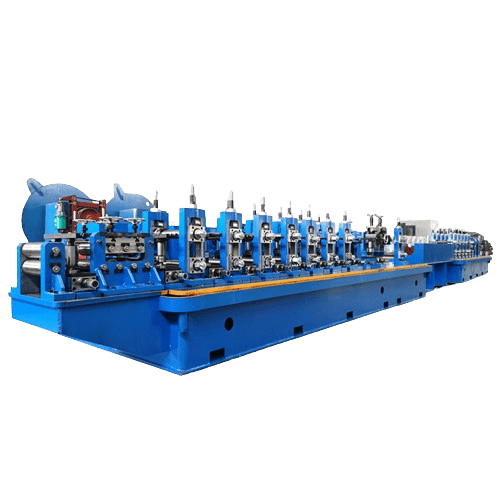
FAQs
Got questions about rolling shutter slat roll forming machines? We’ve got answers! Here’s a breakdown of some frequently asked questions to guide you on your roll forming journey:
Q: What are the maintenance requirements for a rolling shutter slat roll forming machine?
A: As with any industrial machinery, regular maintenance is crucial to ensure optimal performance and longevity. Here’s a basic checklist:
- Lubricate moving parts: Follow the manufacturer’s recommendations for lubrication frequency and type of lubricant.
- Inspect rollers for wear: Worn rollers can affect the quality of the formed slats. Replace them promptly if necessary.
- Clean the machine regularly: Accumulated dirt and debris can hinder smooth operation.
- Schedule periodic professional maintenance: Having a qualified technician inspect the machine can identify potential issues before they escalate.
Q: Can a rolling shutter slat roll forming machine be used to create slats for other applications besides shutters?
A: Absolutely! The versatility of these machines allows for the forming of various metal profiles beyond rolling shutter slats. Some potential applications include:
- Cladding panels for walls or roofs
- Door and window frames
- Furniture components
- Conduit and ductwork
The key is to ensure the chosen machine has the capability to form the desired profile dimensions and material thickness.
Q: I’m new to roll forming. What factors should I consider before purchasing a machine?
A: Here are some key considerations for first-time buyers:
- Production Needs: Evaluate your anticipated production volume and the types of slats you plan to create.
- Budget: Determine your investment capacity and factor in not just the machine cost but also installation, tooling, and maintenance expenses.
- Space Requirements: Ensure you have adequate space to house the machine comfortably, considering material handling and storage needs.
- Technical Support: Choose a supplier that offers reliable after-sales support and readily available spare parts.
Q: Are there any safety precautions to take when operating a rolling shutter slat roll forming machine?
A: Safety is paramount! Here are some essential precautions:
- Always wear appropriate safety gear: This includes gloves, safety glasses, and hearing protection.
- Keep loose clothing and jewelry away from moving parts.
- Never reach into the machine while it’s operating.
- Ensure proper training for all operators: Familiarize yourself with the machine’s operation and safety protocols before running it.
Q: Where can I find more information about rolling shutter slat roll forming machines?
A: Several resources can enhance your knowledge:
- Manufacturer websites: Most reputable suppliers offer detailed information about their machines and roll forming technology on their websites.
- Industry associations: Organizations like the American Roll Forming Institute (ARFI) provide industry news, technical resources, and a potential directory of member companies.
- Online forums and communities: Connecting with other roll forming professionals online can provide valuable insights and troubleshooting tips.
Frequently Asked Questions (FAQ)
1) What material grades are best for rolling shutter slats?
- For steel: DX51D+Z, DX52D+Z, or ASTM A653 CS Type B with G90 zinc. For aluminum: 3003-H14 or 5052-H32. Choose thickness 0.4–1.0 mm depending on span and wind load.
2) How do I minimize oil canning and surface marks on painted slats?
- Use crowned entry guides, low-roughness (Ra ≤0.4 μm) roll surfaces, micro-emulsion lubricants, and maintain consistent strip tension. Add felt wipers and film protectors for prepainted coils.
3) What’s the ideal production speed for high-quality shutter slats?
- Typical 8–25 m/min. For perforated or foam-filled double-wall slats, limit to 6–12 m/min to maintain hole registration and bonding quality. Speed is constrained by punching and cut-off accuracy.
4) Should I pre-punch ventilation/perforation before or after forming?
- Pre-punch for throughput and cleaner edges; integrate servo feed with vision registration. For complex ribbed slats, consider post-punch in a secondary station to avoid hole distortion on bends.
5) Which QC metrics matter most for Rolling Shutter Slat Roll Forming Machines?
- Key metrics: profile width/height ±0.3–0.5 mm, interlock fit gauge “go/no-go,” straightness ≤1.0 mm per 2 m, twist ≤1.0° per 3 m, cut length ±0.8–1.5 mm at 3 m, coating damage rate <0.5% slats.
2025 Industry Trends
- Servo tool-less changeover: Recipe-driven roll positioning and digital crown control cut changeovers to 10–20 minutes for different slat profiles.
- Inline vision QA: Cameras and laser triangulation check interlock geometry, burr height, and paint scuffing in real time; SPC reduces scrap by >30%.
- Eco-coatings and Zn-Mg substrates: Shift from traditional G60/G90 to Zn-Mg (e.g., ZM120) for better corrosion resistance with thinner coatings.
- Energy and safety upgrades: IE4 motors, regenerative VFDs, and light-curtain zones reduce energy use 15–25% and improve operator safety.
- Integrated perforation modules: High-speed servo punching synchronized with forming enables patterned privacy/airflow slats without secondary ops.
2025 Benchmarks for Rolling Shutter Slat Lines
| KPI (0.4–1.0 mm steel/aluminum) | 2023 Typical | 2025 Best-in-Class | Notes |
|---|---|---|---|
| Changeover time (profile-to-profile, min) | 45–90 | 10–20 | Servo sizing + HMI recipes |
| Startup scrap (%) | 2.5–4.0 | 0.8–1.5 | Inline vision + SPC |
| Length tolerance at 3 m (± mm) | 2.0 | 0.8–1.2 | Encoder + thermal comp |
| Interlock defect rate (%) | 1.2 | 0.3–0.6 | Gauge + adaptive pass |
| Energy (kWh/1,000 m) | 60–85 | 45–65 | IE4 + regen drives |
| Surface defect rate on prepaint (%) | 1.0–1.5 | 0.3–0.7 | Film + low-Ra rolls |
Authoritative sources:
- ASTM A653 (steel), EN 10346, and ISO 16120: https://www.astm.org; https://standards.iteh.ai; https://www.iso.org
- AAMA 2605 (architectural coatings): https://www.aamanet.org
- DOE Advanced Manufacturing (motors/VFD): https://www.energy.gov/eere/amo
- OPC Foundation for industrial interoperability: https://opcfoundation.org
Latest Research Cases
Case Study 1: Vision-Guided Interlock Assurance for Security Slats (2025)
Background: A European shutter OEM had intermittent interlock failures (1.4% returns) on double-wall steel slats formed at 14 m/min.
Solution: Added inline vision with laser profile measurement to track hook height and burrs; implemented closed-loop adjustments on the calibration passes and cut-to-length timing via OPC UA to the line PLC.
Results: Interlock defect rate dropped to 0.4%; startup scrap fell from 3.1% to 1.2%; OEE improved by 7% within 60 days.
Case Study 2: Servo Punch + Foam Fill Process Optimization (2024)
Background: A Middle East producer introduced perforated aluminum slats with PU foam filling for thermal/acoustic performance but faced hole ovalization and foam leakage.
Solution: Migrated to synchronized servo punching before forming with anti-flutter support; reduced line speed to 10 m/min during fill; adjusted pass design to compensate springback on 5052-H32.
Results: Hole roundness improved by 38%; foam leakage incidents reduced by 82%; customer complaints reduced from 12 to 2 per 10,000 slats.
Expert Opinions
- Dr. Helena Ortiz, Materials Scientist, CSIRO Manufacturing
- “Switching to Zn-Mg coated steels allows thinner coatings without sacrificing corrosion life—ideal for shutters in coastal environments where weight and durability are both critical.”
- Mark Reynolds, Director of Automation, The Bradbury Group
- “Recipe-driven servo sizing and inline vision are the fastest ROI upgrades on rolling shutter slat lines. You’ll see fewer interlock issues and quicker qualification after changeovers.”
- Luca Ferraro, Product Manager, Dallan S.p.A.
- “For prepainted coils, roll surface finish and lubricant chemistry are paramount. A low-Ra roll set and proper micro-emulsions cut visible scuffing by more than half at standard line speeds.”
Practical Tools/Resources
- COPRA RF (roll design/springback simulation): https://www.datam.de
- UBECO PROFIL (pass development for thin-gauge profiles): https://www.ubeco.com
- AAMA 2605 coating performance guideline: https://www.aamanet.org
- ASTM/EN coated steel standards (A653, EN 10346): https://www.astm.org; https://standards.iteh.ai
- NIST Engineering Statistics Handbook (SPC/CpK): https://www.itl.nist.gov/div898/handbook
- OPC Foundation (OPC UA specifications): https://opcfoundation.org
- DOE AMO Motor Systems Tool resources: https://www.energy.gov/eere/amo
Editor’s tip: Add a first-article inspection (FAI) checklist for Rolling Shutter Slat Roll Forming Machines covering interlock fit, profile dimensions, twist/straightness, coating integrity, and cut-length accuracy; log coil ID, grade/temp, and recipe ID for traceability.
Last updated: 2025-10-21
Changelog: Added 5 FAQs, 2025 trend analysis with KPI table, two recent case studies, expert viewpoints, and vetted tools/resources with authoritative links for Rolling Shutter Slat Roll Forming Machines
Next review date & triggers: 2026-04-21 or earlier if coating/ASTM-EN standards update, new servo vision QA modules launch, or DOE motor efficiency guidance changes
